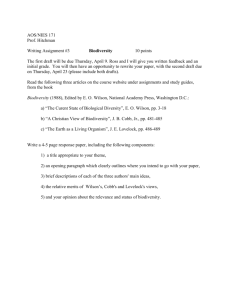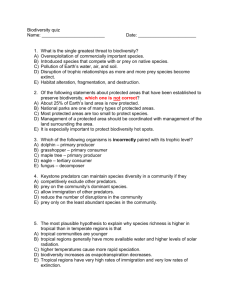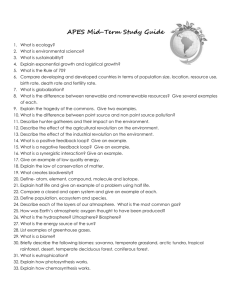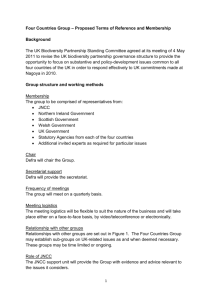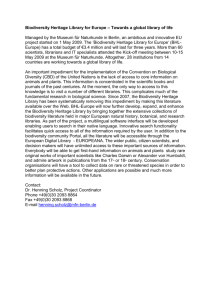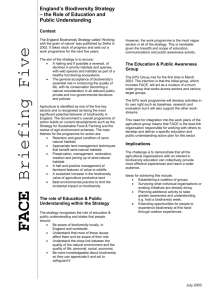Study Guide- Exam 3-
advertisement
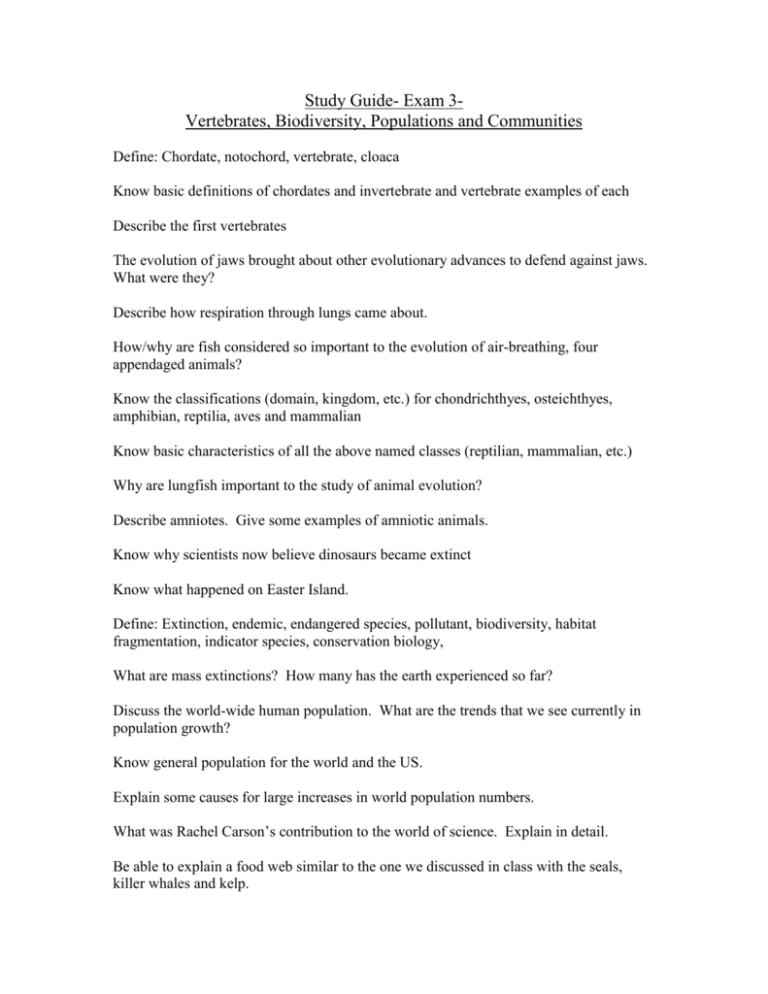
Study Guide- Exam 3Vertebrates, Biodiversity, Populations and Communities Define: Chordate, notochord, vertebrate, cloaca Know basic definitions of chordates and invertebrate and vertebrate examples of each Describe the first vertebrates The evolution of jaws brought about other evolutionary advances to defend against jaws. What were they? Describe how respiration through lungs came about. How/why are fish considered so important to the evolution of air-breathing, four appendaged animals? Know the classifications (domain, kingdom, etc.) for chondrichthyes, osteichthyes, amphibian, reptilia, aves and mammalian Know basic characteristics of all the above named classes (reptilian, mammalian, etc.) Why are lungfish important to the study of animal evolution? Describe amniotes. Give some examples of amniotic animals. Know why scientists now believe dinosaurs became extinct Know what happened on Easter Island. Define: Extinction, endemic, endangered species, pollutant, biodiversity, habitat fragmentation, indicator species, conservation biology, What are mass extinctions? How many has the earth experienced so far? Discuss the world-wide human population. What are the trends that we see currently in population growth? Know general population for the world and the US. Explain some causes for large increases in world population numbers. What was Rachel Carson’s contribution to the world of science. Explain in detail. Be able to explain a food web similar to the one we discussed in class with the seals, killer whales and kelp. What are the four biggest threats to biodiversity. Explain. What is the equilibrium model of biogeography? What is an introduced species? Why is it a threat to biodiversity? Explain and give some real-life examples. Be able to discuss coral reefs, giving special attention to the way they form, why they are important and what threats they face. Why is poverty a risk to biodiversity? Be able to discuss some solutions that conservation biology has suggested to prevent losses to biodiversity (ecotourism, etc.) Define: Population, community, reproductive base, population size, habitat, population density, carrying capacity, parasite Describe the three basic population distribution patterns and give examples of animals (or habitats) where each would be seen. Explain a carrying capacity graph. Explain why density dependent and density independent controls are different and why. Give examples. Describe the three “patterns of survival” and give examples of animals that would fall into each category and WHY. Give examples of commensalism, mutualism, parasitism, and predation Define and give examples (real or made-up) of the two types of competitive interaction. Explain the theory of competitive exclusion? Give an example of resource partitioning. Explain the three types of predator prey interactions. Why is it said that predators and prey co-evolve? Know the common prey defenses How can parasites sometimes kill their hosts?



